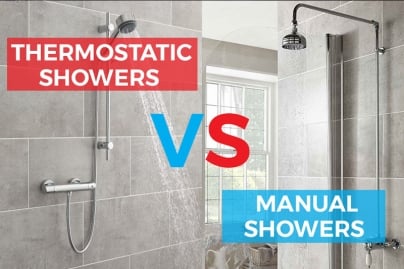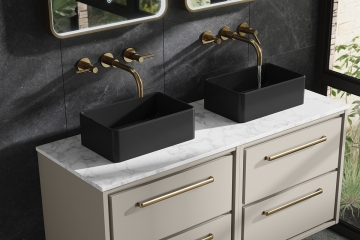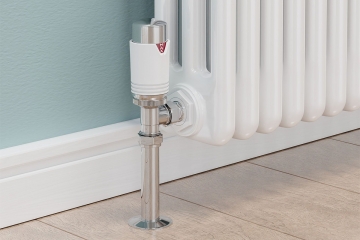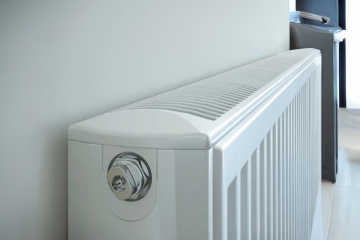Thermostatic Showers vs Manual Showers

Thermostatic Showers vs Manual Showers
With a wide variety of traditional manual showers and the more recently innovated thermostatic showers, it can sometimes be difficult to recognise which type you're purchasing and the positives and negatives of each. The vast majority of modern showers can be placed into one of these two categories, with simple distinctions between the two.
Manual Showers Explained
Manual showers have their water flow controlled entirely by the user, who regulates the flow of hot and cold water with one or two handles until they are satisfied with the temperature of the shower spray. This makes them more or less the equivalent of a basin tap, in terms of how they're operated, and most modern valves will be controlled by a single lever, which controls the temperature and water flow. While this makes them extremely simple to operate, the reliance on user control means that manual showers are especially susceptible to bursts of hot or cold if someone operates a tap or flushes a toilet elsewhere in the house. This isn't a problem if you live alone, of course, making them a fine choice for smaller properties but can raise issues if you have children. Most units will be suitable for both high and low pressure water supplies but this can vary from model to model, so it's worth checking before you make a purchase.
Thermostatic Showers Explained
Thermostatic showers feature a thermostatic cartridge that constantly monitors the temperature of the water flow to ensure that it maintains the temperature chosen by the user. If the supply of hot or cold water is changed, the thermostat adjusts the flow in such a way that the user doesn't feel any difference. Some thermostats take this even further by automatically shutting off if there is insufficient hot or cold water, preventing any sudden and unpleasant bursts of water at either end of the temperature range. This makes thermostatic showers a great choice for any home with small children. They usually feature two or three handles, allowing a user to control temperature and flow separately until you find the perfect shower for your needs. The temperature can then be left as it is, meaning future showers can be ideal the moment you switch them on and saving you both time and money.
For an even more precise level of control, new digital shower controls can be installed externally and used to activate the shower and make it reach the ideal temperature before even stepping inside the enclosure. Thermostatic showers are naturally pricier than manual valves but this is negated by years of comfortable, convenient cleaning experiences.
Related Posts
Countertop and inset basins look completely different, function quite differently in daily use, and suit different bathroom styles and practical needs. So here's how to work out which one's actually right for your space.
Understanding how TRVs actually function can save you a fair chunk of money on heating bills whilst making your home more comfortable. They're cleverer than they look, and once you know what you're doing with them, they pretty much run themselves.
Your heating's on, but some rooms are tropical while others feel like winter? The culprit is most likely unbalanced radiators. Let's take a closer look.




